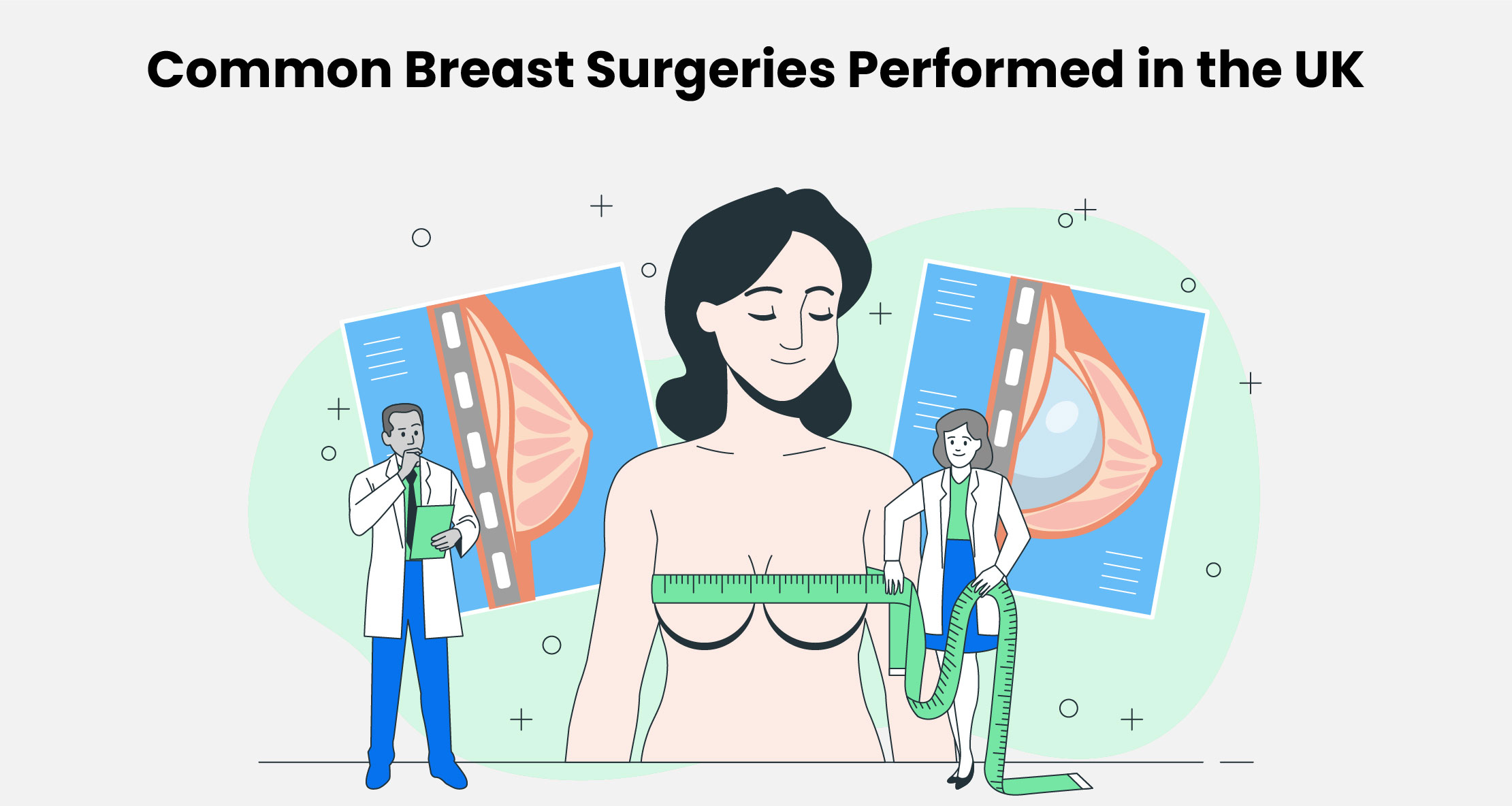Introduction
The UK is seeing a growing trend of people going abroad for cosmetic surgeries due to their significantly lower costs. However, it is concerning because this trend is associated with a rising number of complications requiring corrective surgery or patients needing hospital treatments after the procedure.
Let’s evaluate the risks associated with medical tourism for cosmetic surgery and how UK healthcare ensures patient safety is at the forefront of any surgical interventions.
7 Benefits of Undergoing Cosmetic Surgery in the UK
Highly Regulated Healthcare
Patients in the UK have access to safe, quality care from medical practitioners with the appropriate expertise and skills. Private or independent clinics and hospitals must be registered with the Care Quality Commission (CQC), which ensures the healthcare provider meets care and safety standards for aesthetic treatments. The CQC undertakes an in-person inspection to review the clinic and evaluate the quality of care and safety.
Apart from the CQC, the clinic must register with other regulatory bodies depending on the cosmetic or aesthetic services provided, such as the Health and Safety Executive (HSE), beauty qualification such as NVQ3 or VTCT Level 4 Laser, and IPL Certificate for laser treatments. In addition, the Health and Care Act of 2022 allows the Secretary of State for Health and Social Care to introduce a license for clinics and hospitals undertaking non-surgical cosmetic procedures such as Botox, dermal fillers, anti-wrinkle injections, etc. This scheme aims to assure patients, choosing to undergo a non-surgical cosmetic procedure in the UK, that the treatment is safe and high-standard.
High Training Standards & Qualifications of Medics
Doctors and surgeons must be registered with the General Medical Council (GMC) which is responsible for setting the standard of medical education and practice in the UK. In addition to this, they can be members of the British Association of Aesthetic Plastic Surgeons (BAAPS) and the British Association of Plastic, Reconstructive and Aesthetic Surgeons (BAPRAS). While these aren’t regulatory bodies, these associations promote and contribute extensively toward improving education, best practices, and safety in cosmetic surgery in the UK.
All additional staff at the clinic or the hospital must be registered with appropriate regulatory bodies such as the General Pharmaceutical Council (GPhC), and the Nursing and Midwifery Council (NMC). They must also be licensed to perform services listed by the clinic or hospital including non-surgical treatments involving injections. The Royal College of Surgeons also offers the Cosmetic Surgery Certification to ensure cosmetic surgery in the UK is more transparent and improve services provided by healthcare professionals.
Regulations for Medical Equipment
The UK also has regulations around all medical equipment used during cosmetic surgery. These regulations are managed by the Medicines and Healthcare Products Regulatory Agency (MHRA) and state that devices considered medical equipment in other countries may not be regarded as the same in the UK unless they satisfy the terms laid down in the UK Medical Device Regulations 2002.
Medical equipment manufacturers must adhere to the guidelines outlined in the UK Medical Device Regulations and serve a ‘medical purpose’ that must be detailed in its labeling, instructions of use, and all promotional or advertising material. The devices, including dermal fillers, must also be registered under the MHRA.
A Patient-Centered Approach
The UK emphasizes ethical conduct by providing complete information regarding cosmetic procedures, giving patients time to consider their choices, and allowing them to make decisions aligned with their personal goals. Treatment plans and surgical approaches are personalised to meet the patient’s needs. All patients are provided comprehensive consultation, along with the benefits and risks of the procedure and possible alternative procedures. They are encouraged to ask questions and voice their concerns, ensuring they have full understanding of the impact of surgery and recovery before they consent to it.
Regulations governed by the GMC in the UK also ensure comprehensive after-care including follow-up consultations with surgeons to evaluate recovery, monitor progress, and address any post-surgical concerns.
No Hidden Costs for Surgery
It’s important to note that the costs of cosmetic surgery in the UK can vary widely and depend on different factors including the type of procedure and the degree of personalisation needed to obtain the desired results. All charges are indicated in the final price quoted to the patient with complete transparency.
The National Health Service (NHS) outlines the range of prices for surgeries such as breast enlargement using implants and breast reduction undertaken by them. However, for the NHS to cover surgery of this nature, it must be necessitated by a medical need – psychological or health-related. The NHS, under other circumstances, does not cover cosmetic surgery.
Legal Protection & Patient Rights
In the UK, there is a provision for legal protection against medical treatment gone wrong or medical negligence. For surgeries that the NHS covers, it has an internal complaints procedure in place for patients to register their grievances. It also includes the option to escalate the concern to the Parliamentary and Health Service Ombudsman if required. For matters that are not resolved internally, the patient can pursue legal recourse, file a medical negligence lawsuit, and provide evidence supporting the claim of negligence by the medical professional or hospital that caused harm. The NHS has outlined patient rights and responsibilities in its constitution and works toward upholding it.
All private clinics and hospitals are expected to have transparent and accessible procedures for patients to file complaints. They can register their complaints directly with the clinic or they can reach out to the governing bodies such as the GMC or the CQC. Additionally, patients are to be informed of these measures and supported through the processes. They can also pursue a legal course of action if they deem necessary. Private clinics and practices may be sued for medical malpractice, negligence causing harm, performing a cosmetic surgery that was out of scope, or gaining consent from the patient without giving them proper information about the procedure.
Lower Risks than Medical Tourism
Risks associated with pursuing cosmetic surgery away from the UK are many. One of the very likely ones includes complications that may arise from traveling long distances too early in recovery. Moreover, there is a need to ensure that proper aftercare is available at the patient’s convenience, including follow-up appointments for cosmetic surgeries performed abroad. These may be difficult to organise. Besides, healthcare regulations may be less strict in regions other than the UK, and the lack or the absence of legal provisions to protect patient rights against medical negligence or malpractice must also be considered.
In addition, travel insurance may not cover elective surgeries such as cosmetic surgery. Patients, therefore, must consult their insurance providers early on and request more information on covering or reimbursing the cost of surgery. These concerns, collectively, may influence the total cost of surgery abroad without lowering the risks.

Common Breast Surgeries Performed in the UK
- Breast Augmentation with Implants
Also known as breast enlargement and augmentation mammoplasty, this surgical procedure helps change and increase the size, shape, and volume of the breast. It is done by placing a silicone or saline implant under the breast tissue, under the chest muscles, or using a combination of the two. Breast augmentation may also be opted for as reconstructive surgery after a mastectomy (surgical procedure to partially or completely remove one or both breasts) performed to treat breast cancer. - Breast Reduction
This cosmetic surgical procedure is often suggested to women with big, heavy breasts that cause chronic neck, shoulder, and back pain along with limitations in other aspects of their daily life, such as exercise, sport, suffocation when lying down etc. Breast reduction surgery removes excess breast tissue and skin to reduce the size of the breasts and alter their shape and position. - Breast Lift
This type of breast surgery attempts to address sagging or drooping breasts by removing excess skin and reshaping the breast tissue, which is also called a mastopexy. This helps the breasts appear fuller and perkier. While a breast lift surgery sounds similar to a breast reduction, it varies in the amount of breast tissue and excess skin that is removed during surgery to achieve the desired results. Moreover, a breast lift focuses more on tightening the tissue to enhance the appearance of breasts while a breast reduction aims to reduce the size of breasts which otherwise hinders daily life for a woman. - Liposuction
Also known as body contouring or lipoplasty, this surgical method removes fat from the breasts, stomach, hips, thigh, glutes, or face to enhance appearance and shape. A medical solution is first injected into the areas to treat, followed by the use of vacuum suction to draw out and remove fat. - Fat Transfer Augmentation
Similar to the breast augmentation procedure, the fat transfer augmentation surgery helps increase the size of breasts but using fat harvested from another part of the patient’s body. Fat is usually removed through the liposuction procedure from the thighs, stomach, or arms, purified, and injected back into the breasts to make them bigger and create more natural-looking results. Fat transfer augmentation is also minimally invasive and presents a low chance of rejection since the fat is harvested from the patient’s body. However, this procedure doesn’t guarantee an increase in the size of breasts by multiple sizes.
Other Cosmetic Surgeries Performed in the UK
- Abdominoplasty
More commonly known as a tummy tuck, an abdominoplasty is a cosmetic surgery to remove loose and excess skin around the tummy and tighten the abdominal muscles to give it better shape. There are four types of abdominoplasty procedures: a mini tummy tuck involving smaller incisions in the lower abdominal region, a full tummy tuck that involves larger incisions from hip to hip across the lower abdomen, a Brazilian tummy tuck that includes a combination of liposuction and a tummy tuck to give the impression of a smoother and contoured abdomen, and endoscopic abdominoplasty which involves small cuts and surgical instruments to tighten the abdominal muscles.
- Hair Transplant
Men often experience thinning hair and hair loss amounting to permanent balding which affects their self-image and esteem. To initiate and restore hair growth in those areas of the head, a cosmetic procedure is undertaken where hair follicles from the back of the head are extracted and transplanted. This is called a hair transplant. Two techniques are predominantly used: Follicular Unit Extraction (FUE) where individual hair follicles are taken from the donor area using a punch machine, and Strip Follicular Unit Transplantation (Strip FUT) where a strip of the scalp is taken from the donor area and then follicular units are extracted for transplantation.
 Neck and Face Lift
Neck and Face Lift
Both these cosmetic procedures are commonly used to tighten the skin on a patient’s neck or face. Over time, as a person ages, the skin begins to lose its elasticity causing it to sag and the muscles can slacken. Drastic weight loss can have the same effect on the face and neck. During a facelift, cuts are made in front of the ears on both sides and along the hairline. Excess skin is then removed and the rest is sewn into place while redistributing the fat and tissue effectively. A facelift will involve lifting the skin above the neck only, while a neck lift will include stitching the neck muscles and the skin to tighten it. Sometimes a combination of the two procedures may be used to create a more youthful appearance. Blepharoplasty
Blepharoplasty
Also known as eyelid surgery, this cosmetic procedure removes fat and skin from the upper, lower, or both eyelids. It helps reduce puffiness of the eyes, correct drooping eyelids that may obstruct vision, and improve their appearance. Skin on the eyelids may begin to sag having lost its elasticity due to aging and collect above the upper eyelids as folds and deepen the creases in the lower lids. The loosening muscle also makes the fat stored in the eyelids protrude and give a baggy appearance. Other causes of sagging eyelids include sun damage and angioedema.- Non-Surgical Treatments
There are other cosmetic procedures that can improve appearance while being minimally invasive. Eg. Botox to reduce wrinkles and relax the muscles, dermal fillers to fill in wrinkles, scars, and lines, and laser treatments to address acne scars, permanent hair removal, and sun damage etc.
Critical Considerations Before Cosmetic Surgery
- Personal Goals
Evaluate your present concerns and outline what you want to achieve with cosmetic surgery. This will help set expectations with your surgeon and medical team and enable them to deliver a personalised and effective plan for surgery and optimise recovery for desired results. - Type of Surgery
From breast augmentation with implants or fat transfer, breast reduction, and liposuction to a tummy tuck, a facelift, and non-invasive procedures using injectables – the options are many. Your personal goals will also determine the type of cosmetic surgery, the techniques used to treat you, and recovery recommendations. - Expertise & Experience of Surgeon
Another consideration that must be made is your choice of surgeon. Do your research and ask your surgeons about their experience and expertise in the specific type of surgery you want. Request to see patient testimonials with their consent and if they’re available. These will help to gain a more comprehensive understanding of your surgeon’s success in the cosmetic surgery you desire. - Recovery and After-Care
Evaluate the hospital or clinic (private or public) at which you’re expected to have the cosmetic surgery performed. While all clinics in the UK must adhere to CQC guidelines and are governed by the GMC, it is still important to assess how they treat and manage patient care after both a big and a non-invasive surgery as it will set the tone for your road to recovery. - Quality of Life
Often after big surgeries that influence a drastic change in your physical appearance, life can change dramatically. Not only in terms of how people around you perceive and treat you, but also your day-to-day activities. Therefore, it is necessary to know if and how your life is expected to change after the cosmetic surgery. Having insights into this aspect can help you effectively prepare for life after surgery and improve your quality of life.
Medical Insurance in the UK
- Private Insurance
Providing coverage for cosmetic surgeries that are purely focused on changing your appearance is at the discretion of your insurance provider. They may cover weight loss or reconstructive procedures, and not others. However, it is best to consult your insurance provider to get a complete understanding of their policies and the kind of coverage they offer for the procedure you’re looking to undergo. - Public Healthcare
The NHS, as a rule, doesn’t cover cosmetic surgeries for aesthetic purposes. However, they may consider exceptions if the case is determined to be medically necessitated by a condition causing psychological distress, or is a reconstructive procedure. In that case, you will first be evaluated by a General Physician (GP) who will determine whether the surgery is a medical necessity under the guidelines provided by the local Integrated Care Board (ICB), and recommend your case to an executive board to review and approve. Evaluation doesn’t guarantee approval for coverage and the wait times for approval can be longer.
Conclusion
References
Borderlines with medical devices and other products in Great Britain. (2024, April 8). GOV.UK.
CQC welcomes new standards for cosmetic surgery – Care Quality Commission. (n.d.).
England, N. (n.d.). NHS England » Care Quality Commission.
Eyelid surgery (Blepharoplasty) | The British Association of Aesthetic Plastic Surgeons. (n.d.).
Facelift and necklift | The British Association of Aesthetic Plastic Surgeons. (n.d.).
Foreign travel insurance. (2024, August 2). GOV.UK.
Patient rights & Responsibilities | North Bristol NHS Trust. (n.d.).
The licensing of non-surgical cosmetic procedures in England. (2023, September 2). GOV.UK.
Website, N. (2023, April 21). Is cosmetic surgery available on the NHS? nhs.uk.
Website, N. (2024a, May 7). Tummy tuck (abdominoplasty). nhs.uk.
Website, N. (2024b, May 7). Tummy tuck (abdominoplasty). nhs.uk.
Website, N. (2024c, August 27). Breast enlargement (implants). nhs.uk.
Website, N. (2024d, August 27). Breast reduction (female). nhs.uk.







 Neck and Face Lift
Neck and Face Lift Blepharoplasty
Blepharoplasty

